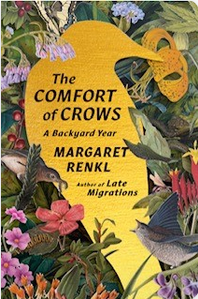More on this book
Community
Kindle Notes & Highlights
See the way the bones in the turtle’s webbed foot resemble the bones in the duck’s webbed foot. Hold open your hand. Trace the outline of your fingers. Stop and think for a time about kinship. Think for a long time about kinship. The world lies before you, a lavish garden. However hobbled by waste, however fouled by graft and tainted by deception, it will always take your breath away.
Only when I head outside do winter’s consolations become clear. The small ground birds rustling in the leaf litter are suddenly visible. I can tell the song sparrows from the field sparrows, and the Carolina wrens from the winter wrens. The contours of the earth emerge, fold upon fold, as though I had been seeing before in only two dimensions. On the lake trail, I turn toward the belted kingfisher’s rattling call, and there is the kingfisher himself, his shaggy crest scraping the blue sky from a branch high in the trees.
Immersing myself in the natural world of my own backyard—or the nearby parks and greenways, or the woods surrounding our friends’ cabin on the Cumberland Plateau—is the way I cope with whatever I think I cannot bear. I’m not trying to hide from the truth but to balance it, to remind myself that there are other truths, too. I need to remember that the earth, fragile as it is, remains heartbreakingly beautiful. I need to give my attention to a realm that is indifferent to fretful human mutterings and naked human anger, a world unaware of the hatred and distrust taking over the news.
There can be no reasonable argument about what is happening to the planet, now that daffodils so commonly bloom in February.
I was remembering my favorite part of planting: the moment when the seedling, fragile as any lace-winged insect or hollow-boned nestling, somehow shoves the clods of earth aside and makes its way upward and outward. Searching for the light.


